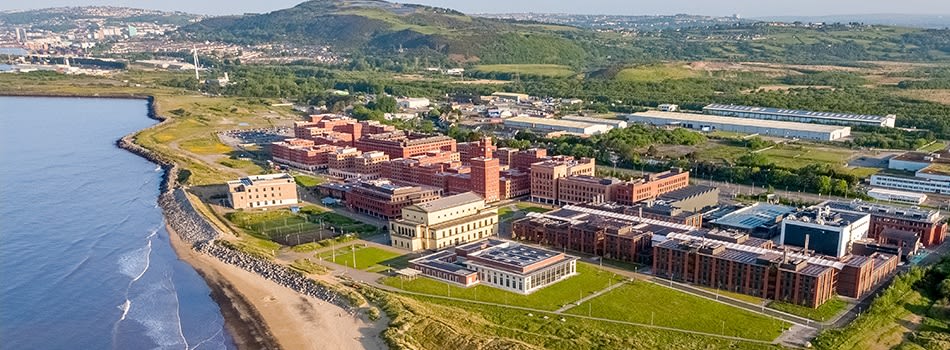About the Project
Start date: October 2018
Sponsoring Company: Carl Zeiss Microscopy
Materials science challenges are typically associated with understanding connections between processing, structure, properties, and performance. As demands for materials innovation continue to increase, we must improve our capacity to both design and understand new, complicated structures and compositions of materials, often across a range of length scales. For a huge spectrum of engineering materials from battery electrodes to fiber composites to metal alloys, there exist features from the nanometer scale up to mm and larger which play unique and distinct roles in determining the functionality of that material or device.
Central to understanding these multiscale features are a variety of experimental characterization methods, of which microscopy plays a key role. Historically, individual microscopy techniques have been developed and adapted to each specialize in a relatively well-defined range of scales, modalities and dimensions, providing a sub-set of the information needed to describe a sample. However, it is increasingly the case that multiple microscopes are employed to provide a more complete picture.
To tackle this multiscale problem brute force approaches can be tempting, whereby huge areas (to satisfy the larger length scales of the structure) are imaged in their entirety at very high resolution (to satisfy small length scales). However this is often impractical and creates unnecessary overhead in terms of experimental time, unnecessary data and associated challenging big data problems, and data processing complexity.
Often, a more intelligent approach is to use targeted sampling strategies to collect data at specific regions of interest and length scales in a coordinated manner. Correlative microscopy, moving the same sample between different microscopy tools to leverage their individual strengths, offers an attractive solution to collect multiscale and multimodal information while keeping all data within consistent spatial context.
Project Aims:
This project will build upon the current progress in the materials science microscopy community to continue developing and leveraging correlative approaches (including the associated software tools) for the study of functional coatings and engineering materials. Systems of significant interest include steel, other metal alloys, photovoltaics, thermoelectrics, ceramics, and composites.
Workflows across different platforms including optical, electron, and X-ray microscopy will be explored. Incorporating relevant data from other characterization methods (such as mechanical testing or spectroscopy, or in situ sample manipulation) into the workflows is also of interest.
Correlative microscopy methods will consider not only the navigation and correlation of data in 2D (for example by brightfield optical imaging and scanning electron microscopy) but also 3D (using techniques including X-ray microscopy and focused ion beam serial sectioning).
The Athena SWAN Charter recognises work undertaken by institutions to advance gender equality. The College of Engineering is an Athena SWAN bronze award holder and is committed to addressing unequal gender representation.
Eligibility
Candidates should hold an Engineering or Physical Sciences degree with a minimum classification level of 2:1 or equivalent relevant experience.
A suitable candidate has a degree in materials science or engineering. An experimental characterization background of materials in mechanical or structural applications is preferred, ideally with one or more microscopy techniques.
The student will leverage existing ZEISS microscopes located at Swansea University, with the possible opportunity to spend time at a ZEISS Microscopy facility.
We would normally expect the academic and English Language requirements to be met by point of application. For details on the University’s English Language entry requirements, please visit – http://www.swansea.ac.uk/admissions/englishlanguagerequirements/

 Continue with Facebook
Continue with Facebook


